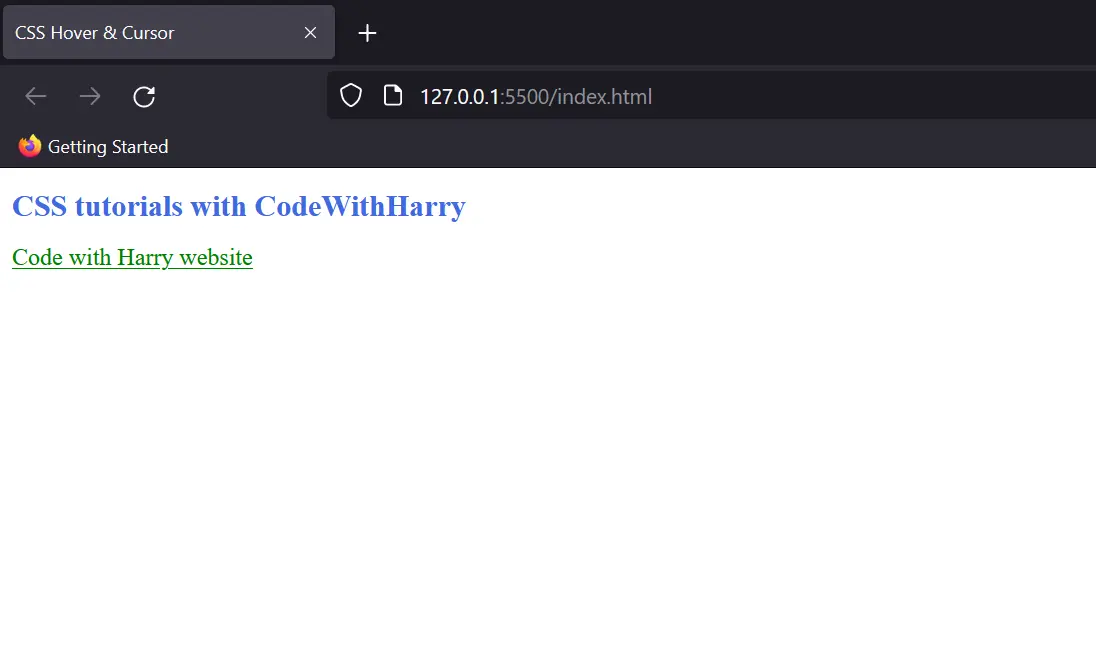Links
Links are one of the most important elements of any website. By default, browsers give them a standard blue color and an underline. But with CSS, you can style links to make them look more attractive and user-friendly.
Different Link States
Links can have different states, and CSS allows you to style each one separately:
- a:link → Styles a normal, unvisited link.
- a:visited → Styles a link that the user has already clicked.
- a:hover → Styles a link when the mouse pointer is placed over it.
- a:active → Styles a link when it is being clicked.
Example:
<!DOCTYPE html>
<html lang="en">
<head>
<meta charset="UTF-8" />
<meta http-equiv="X-UA-Compatible" content="IE=edge" />
<meta name="viewport" content="width=device-width, initial-scale=1.0" />
<title>CSS Hover & Cursor</title>
<style>
h1 {
font-size: 20px;
color: royalblue;
}
a:link {
color: red;
}
a:visited {
color: green;
}
a:hover {
color: hotpink;
}
</style>
</head>
<body>
<h1>CSS tutorials with CodeWithHarry</h1>
<a href="https://www.codewithharry.com/" target="_blank"
>Code with Harry website</a
>
</body>
</html>
Output: When you open this in a browser:
- The link starts as red.
- If you’ve visited it before, it will appear green.
- Hovering your mouse changes it to hotpink.
- Clicking the link will momentarily show it as orange.
- And because of target="_blank", it opens in a new tab.

Quick Recap
- Links in CSS can be styled for different states: link, visited, hover, active.
- This improves the user experience and gives your site a polished, professional look.
- Always style links to match your website’s theme and make navigation clear.